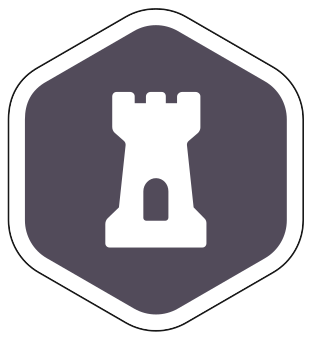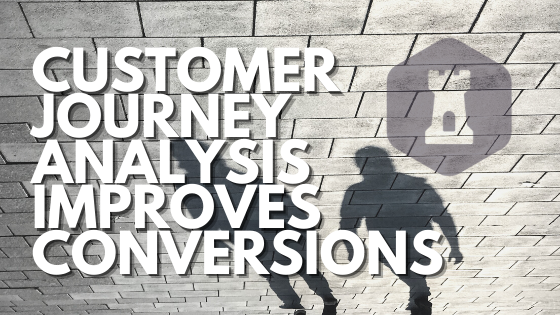Customer journey analysis has turned into a huge hit in the marketing community lately due to the increasing prevalence of data-driven marketing. With as many as 89% of marketers over the world using data to inform the decision-making process, consumer journey analysis has become the magic wand that paves the way to produce greater revenue overnight.
Indeed, research suggests that effective customer journey mapping results in an average increase of marketing ROI of 54%. Furthermore, 63% of digital marketers from another survey rated customer journey analysis as the most valuable method for improving conversion rates, with Marketing Profs rating it as the five most popular methods for improving conversion rates derived from data.
The reason behind the increased prominence of customer journey analysis is that it goes beyond reviewing the performance of individual website elements and instead covers the entire conversion journey—right from website-visit to the final purchase when the lead is converted into a customer.
What Is Customer Journey Analysis?

According to Gartner, customer journey analysis is the method of monitoring and evaluating how consumers use channel combinations to communicate with a company and includes both existing and potential channels that customers use to directly with them.
Customer journey analysis lets a business see its service or products from the perspective of its customers. It lets businesses evaluate all the steps and facets of the interaction that a customer has when engaging with your brand on their journey. This path is then examined in its full sense, offering perspectives that help businesses design services and products appropriately to help consumers achieve their goals.
The Importance of Customer Journey Analysis
Customer journey analysis involves more than simply making prudent marketing choices. More than that, they have a big effect on the bottom line too. In fact, a recent McKinsey survey found that companies that extensively use customer analytics are reporting 115% higher ROI and 93% higher profits.

Consumer journey analysis extracts insights from vast volumes of historical consumer and business data, a methodology that is particularly useful when detecting nuanced trends in customer journeys. This research is increasingly designed to be predictive. The primary objective is to use real-time data to take action that will instantly enhance the experience of each customer.
It helps marketers to track and quantify cross-channel interactions over a period to enhance the customer experience. Through evaluating thousands of data points in real-time, you can detect root causes of friction, discover the underlying cause that has a positive or negative effect on your customers’ experience, and organize steps to improve CX to achieve business results, such as improved profits, enhanced conversion rates, and reduced churn.
3 Ways to Fuel CRO With Customer Journey Analysis
Whether you’re looking to promote loyalty among your existing customers or want to win new over new ones, here are a few actionable ways to do so and improve your conversion rates while you are at it.
1. Reiterate touchpoints and identify the most CRO-friendly channel

By evaluating the journey of the consumer, you can identify the manner in which customers are likely to interact with your brand. Each touchpoint has its own value, and an analysis of how the consumer communicates with your brand lets you assess their experience and make improvements accordingly every step of the way.
Touchpoint analysis is essential for any company, whether large or small. It offers a full view of their whole experience and helps companies reduce their service costs by 15-20%.
More importantly, however, touchpoint analysis lets you evaluate which channels yield the best conversion rates. By understanding the value that you can bring to consumers across every touchpoint, you can separate your marketing strategies and deploy them accordingly to increase the conversion rate of each channel.
2. Invest in live chat software for real-time support
Customers always need answers to their queries and concerns they have about your product or service. However, unlike brick-and-mortar stores, they need to write an email or ask a representative to get back to them whenever they need help while shopping online. This is a lost chance to convert the lead into a sale.

With the help of live chat software, you can service customer queries at any time to shoppers who visit your website at any time. All they have to do is to trigger a conversation through the live chat window, and you can then involve them by providing them with the right content to enable them to make a decision.
Live chat software has been known to significantly improve conversion rates, Invesp survey showing that 38% of consumers will engage in a transaction after a successful session with a live chat agent. It allows you to value a consumer’s interest in your website and goes a long way in converting a prospect into a customer, and can lead to a 20% increase in conversion rates.
3. Segment users according to buying behavior
Whether it be for a PPC campaign or an email marketing campaign, customer segmentation can help you vastly improve your conversion rate. In fact, a MailChimp study revealed that campaigns segmented according to user groups have a 100.95% higher clickthrough rate and a 14.31% higher open rate than campaigns that aren’t.

Through customer segmentation, you can focus on specific segments of your target base instead of going at them as a whole. By targeting consumer groups rather than people, you can avoid developing a standard campaign targeted at all your potential customers. Instead, you can build a marketing campaign to target various types of customers in ways that most align with every segment, thus improving the productivity of your marketing campaigns.
Conclusion
Nowadays, most brands have a thorough comprehension of the journey of their consumers. If you’d like to take your company to the next level by providing a superior experience, you need to invest time in journey analysis. This will help you define all the attributes that contribute to a better experience and simultaneously take steps to build upon them to create a closer connection with your customers and subsequently enhance your conversion rates.
Guest Author bio: Dhruv Mehta is a Digital Marketing Professional who works at Acquire and provides solutions in the digital era. In his free time, he loves to write on tech and marketing. He is a frequent contributor to Tweak Your Biz. Connect with him on Twitter or LinkedIn.

